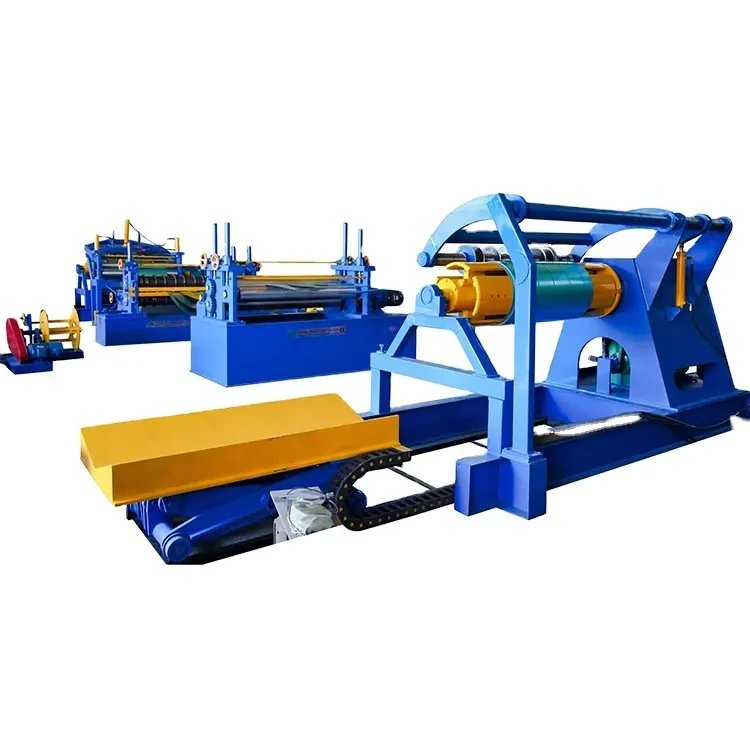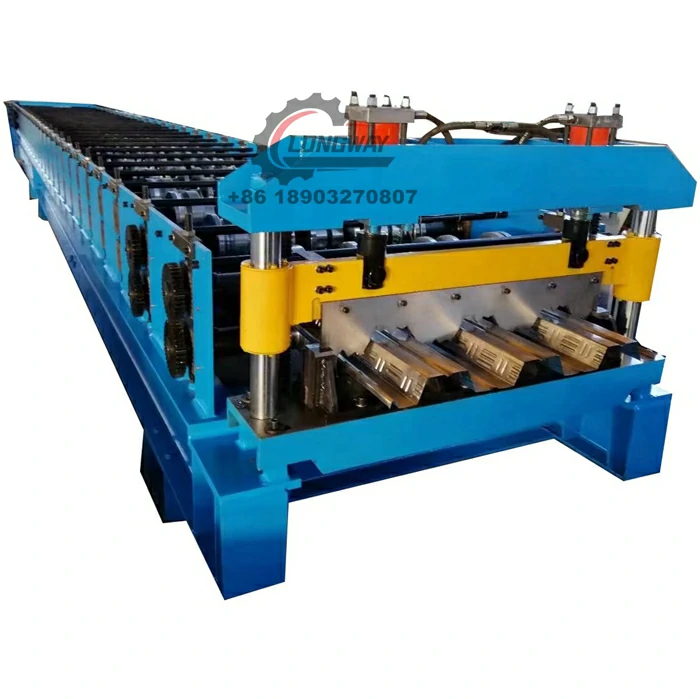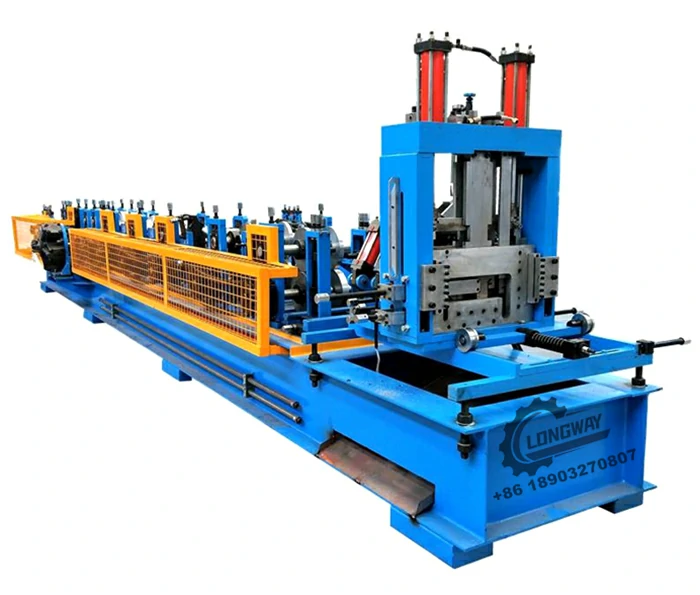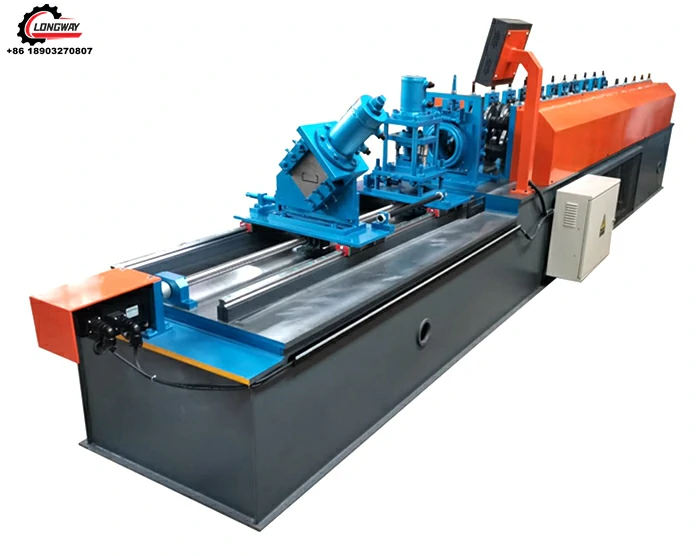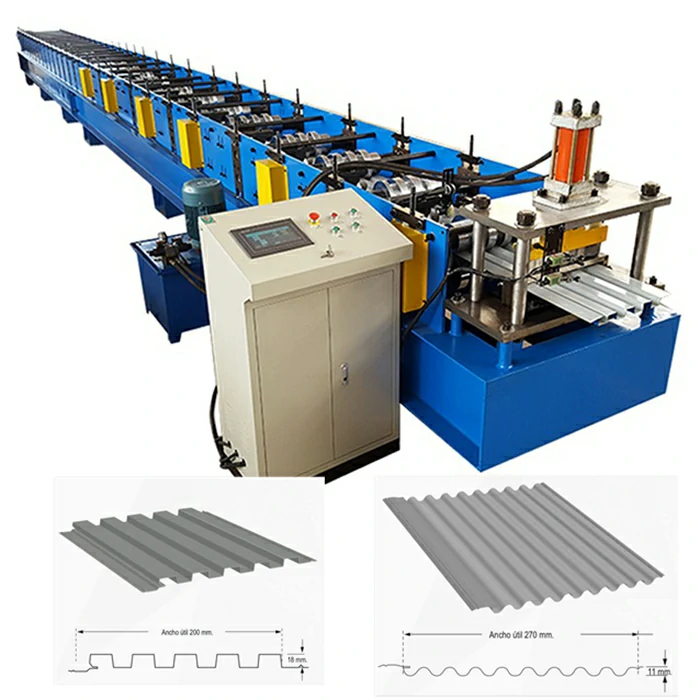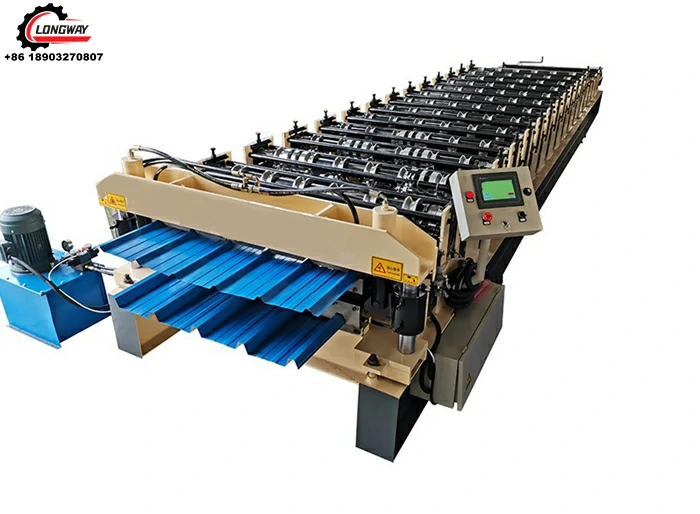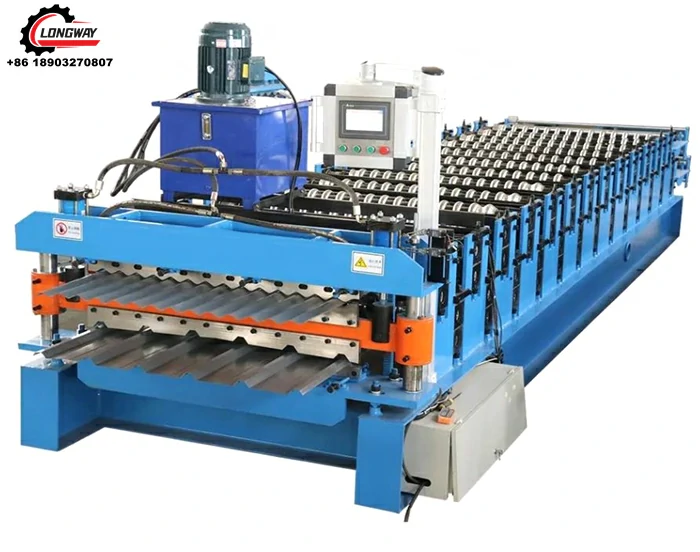Portable Metal Roof Roll Forming Machine – Efficient On-Site Roofing Solutions
The Portable Metal Roof Roll Forming Machine: Why It Matters Globally
In the world of construction and manufacturing, innovation often comes tucked inside machinery that few outside the industry appreciate. One such unsung hero? The portable metal roof roll forming machine. At first glance, it might sound like niche equipment — but consider this: it’s a key player in constructing durable, affordable roofing solutions worldwide, especially where infrastructure development is critical and logistics challenging.
Understanding this technology speaks to broader global challenges, from disaster relief to remote housing projects. It offers flexibility, speed, and cost-effectiveness that traditional building methods cannot. So let’s unpack why these machines are quietly shaping skylines — and saving lives.
Global Context: Meeting Growing Demands with Portability and Efficiency
Globally, demand for quick, safe, and sustainable housing is rising. According to the United Nations’ Habitat Programme, nearly 1 billion people live in inadequate housing, and this number grows year by year. At the same time, industries face stricter environmental standards (ISO 14001) and increasing pressure to innovate under tight budgets.
Enter the portable metal roof roll forming machine — it enables on-site production of metal roofing panels, reducing transport costs and time delays, and lowering carbon footprints. Particularly in regions like Southeast Asia, Africa, and parts of Latin America, where supply chains can be unreliable, this equipment solves a fundamental infrastructure challenge. Think of it as a nimble workshop on wheels, crafting roofs as you need them.
Yet, the challenge remains: how to combine portability with industrial-grade quality? This tension drives ongoing innovation and adoption.
Mini takeaway:
- The machine addresses crucial global needs: affordable housing, sustainability, and rapid deployment.
- It’s especially vital in areas where logistics and infrastructure are weak.
What Exactly Is a Portable Metal Roof Roll Forming Machine?
Simply put, it’s specialized machinery that shapes flat metal coils into corrugated or ribbed roofing panels on-site. By “roll forming,” it means the metal is continuously bent (or rolled) into the desired profile through a series of rollers in one pass, offering speed and precision.
The “portable” part means the entire setup is compact, often mounted on trailers or small vehicles, easily movable to remote sites or disaster zones. It’s a practical marriage of engineering and logistic sensibility.
The machine answers both industrial and humanitarian needs — it enables manufacturers or NGOs to produce resilient, weatherproof roofs locally, cutting down dependence on expensive imports or fragile supply chains.
Mini takeaway:
- It transforms metal coils into ready-to-install roofing panels.
- Its portability allows deployment directly at the point of need.
Key Factors Behind Portable Metal Roof Roll Forming Machines
Durability & Material Quality
These machines shape roofing materials designed to last decades—galvanized steel, aluminum, or sometimes, eco-friendlier coated metals. The formed panels resist corrosion, wind pressure, and in many cases, seismic impacts. A durable machine means precise calibration and consistent profile shaping.
Scalability & Flexibility
Manufacturers can adjust sheet thickness and panel profile to suit different climates and architectural needs. The portability means you can quickly scale operations up or down without building full factories.
Energy Efficiency
Many newer models incorporate energy-saving motors and can even be powered remotely by generators or solar arrays — essential for off-grid locations.
Cost Efficiency
By avoiding shipping bulky roofing materials and tariffs, local production cuts down both cost and lead time. It’s a win-win for budget-conscious projects.
User Friendliness & Automation
Modern machines often feature digital controls and automated cutting to improve accuracy and speed, lowering the dependency on highly skilled labor, which can be scarce in remote areas.
Mini takeaway:
- Robust construction materials, energy savings, and automation are key to efficiency.
- They enable diverse roofing profiles, adapting to regional demands.
Global Applications and Real-World Examples
Portable metal roof roll forming machines have popped up in all sorts of ways. In post-disaster zones — like after earthquakes or typhoons — rapidly providing reliable roof panels can be the difference between shelter and exposure. International NGOs like the Red Cross and Habitat for Humanity have championed these machines for local manufacturing.
Another example: remote mining or oil fields often build temporary or semi-permanent housing for workers. Hauling prefabricated metal roofs long distances is costly. Instead, deploying these machines onsite produces panels on demand, tailored to harsh environments.
Even smaller construction companies in countries from India to Peru are investing in portable roll formers to boost competitiveness – and frankly, to keep their backs against project deadlines.
Mini takeaway:
- Disaster relief, industrial outposts, and small businesses all benefit from local and rapid roof panel production.
- They allow communities more control over building infrastructure.
Advantages That Go Beyond the Roof
The benefits stack up quickly: lower transport emissions, cost reduction, and resilience. But there’s also the less tangible stuff.
People gain dignity through secure housing. Local jobs emerge when production stays in the community. Trust builds when solutions are designed with an understanding of unique local challenges — something off-the-shelf roofs can’t provide.
Plus, metal roofing is recyclable and often better for long-term sustainability than alternatives like asphalt shingles, which wear out quickly.
Product Specification Table
| Specification | Description |
|---|---|
| Machine Weight | Approximately 1,000 kg |
| Power Supply | 220V - 380V, 50/60 Hz; generator compatible |
| Sheet Thickness Range | 0.3 mm to 0.8 mm |
| Roller Stations | 12-15 stations for profile shaping |
| Speed | 8-12 meters per minute (varies by profile) |
| Cutting Mechanism | Hydraulic automatic cutter |
Vendor Comparison Table: Top Portable Roll Forming Machine Providers
| Brand | Portability | Automation Level | Price Range (USD) | Global Support |
|---|---|---|---|---|
| LW Roll Forming | High (Trailer-mounted) | Semi-automated with PLC control | 15,000 - 25,000 | Extensive, Worldwide |
| MegaForm Tech | Medium (Small cart system) | Manual plus digital readouts | 12,000 - 20,000 | Regional (Asia focus) |
| NovaSheet Industries | Low (Requires setup) | Fully automated with IoT capabilities | 25,000 - 40,000 | Global, limited field service |
Looking Ahead: Emerging Trends and Innovations
The future of these machines is downright exciting. Industry leaders are experimenting with solar-powered units and AI-driven control systems to optimize roll speed and reduce material waste. Some futuristic models integrate remote monitoring so operators can troubleshoot and adjust settings from afar — a real game changer for inaccessible sites.
On the materials front, there’s a push to use recycled metals and develop coatings that boost heat reflection, making roofs even more energy efficient in hot climates.
Challenges on the Road—and How to Overcome Them
As you might guess, portability sometimes trades off power. Compact machines can have limitations on max sheet thickness or production speed. Plus, some locations struggle with power availability or technical skills for maintenance.
The solution? Invest in robust user manuals, training programs, and modular designs that allow quick parts replacement. Some manufacturers now bundle on-site setup assistance to get users rolling fast. It’s a bit like giving someone a Ferrari but a manual in 10 languages and a mechanic on call.
Frequently Asked Questions about Portable Metal Roof Roll Forming Machines
- Q: How quickly can a portable metal roof roll forming machine be deployed on-site?
- A: Deployment times vary based on model but generally range from a few hours up to a day. Trailer-mounted units designed for ease of transport and setup can be operational shortly after arrival, enabling rapid response in urgent scenarios.
- Q: What kind of maintenance does the machine require in remote locations?
- A: Basic maintenance includes lubrication of rollers, checking hydraulic fluid, and inspecting electrical connections. Many models come with easy-to-follow guides. It’s advisable to carry a minor toolkit and keep spare parts, especially for cutters and rollers.
- Q: Can the machine produce custom profiles?
- A: Yes. By swapping roller sets, operators can switch between profiles such as corrugated, trapezoidal, or standing seam panels, providing flexibility for various architectural or climatic needs.
- Q: Is local manufacture cost-effective compared to importing prefabricated roofing?
- A: Usually yes. Producing panels on-site saves significant transport costs and import duties. Plus, it reduces lead times and allows for immediate modifications — ultimately lowering project risks and costs.
- Q: How are these machines powered in areas with unstable electricity?
- A: Many units operate on standard generator power or are optimally designed for integration with solar power systems, making them viable in off-grid or disaster-stricken locations.
Conclusion: Why Investing in a Portable Metal Roof Roll Forming Machine Makes Sense
Having walked through its definition, global value, core components, and challenges, it’s clear that the portable metal roof roll forming machine isn’t just a piece of equipment — it’s an enabler of resilient communities and efficient industrial growth around the world.
Whether you’re a small construction firm in a rapidly developing country or a humanitarian organization delivering shelter in crisis, the benefits are tangible: faster builds, lower costs, environmental gains, and, ultimately, better lives. So if you haven’t explored these machines yet, it’s worth a closer look.
For more details and expert guidance, feel free to visit our site and discover the latest models tailored for your needs: portable metal roof roll forming machine.
References & Further Reading
-
Corrugated iron roofing sheet making machine with CE, AutoNewsNov.17, 2025
-
3mm Steel C U Channel Roll Forming Machine, Heavy DutyNewsNov.17, 2025
-
Calamima Micro Ondulada corrugated roof sheet machine - CNCNewsNov.17, 2025
-
Metal Roofing Roll Former for Sale Companies - Fast, PreciseNewsNov.17, 2025
-
Drywall Steel L Angle Bar forming machine | Fast, PreciseNewsNov.17, 2025
-
Corrugated Iron Roofing Sheet Making Machine, Fast & DurableNewsNov.11, 2025
-
Corrugated Metal Roofing Machine | High-Speed, Precise, CENewsNov.11, 2025
